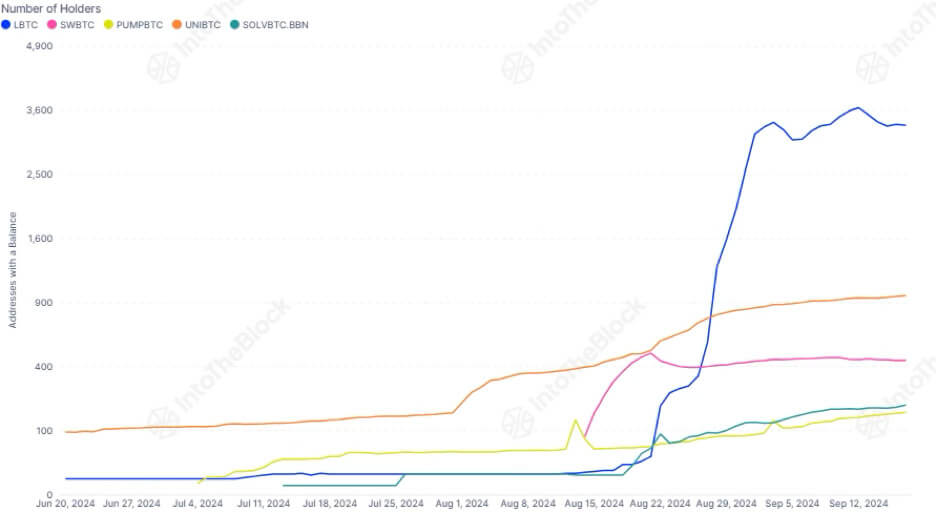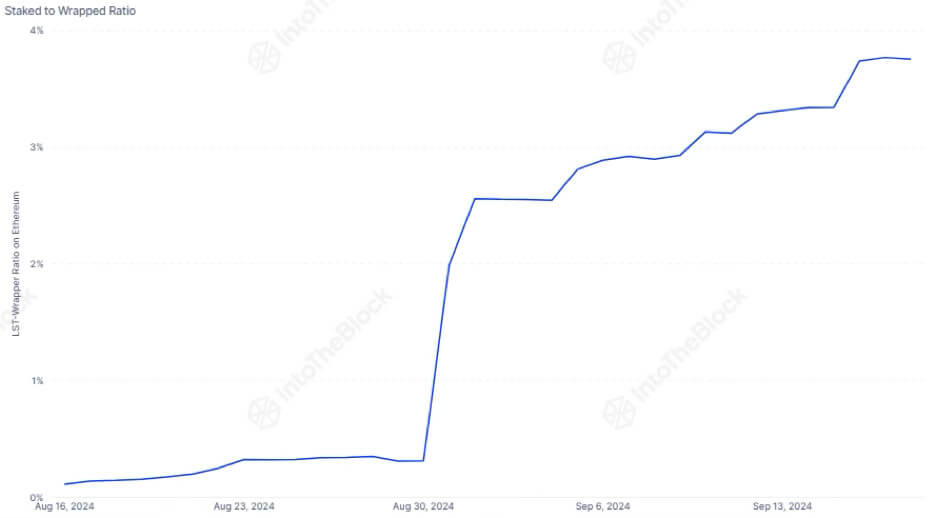The following is a guest post by Vincent Maliepaard, Marketing Director at IntoTheBlock.
When you first hear about Bitcoin staking, you might assume there’s a mistake, given Bitcoin’s Proof of Work (PoW) mechanism. However, Bitcoin staking is indeed a reality, with thousands of addresses participating and generating returns on their assets. Here’s what you need to know.
Bitcoin Staking Explained
Staking traditionally refers to the process where holders of a cryptocurrency lock up their funds to participate in network operations, such as transaction validation on Proof of Stake (PoS) blockchains. Bitcoin, however, operates on a PoW consensus mechanism, which does not natively support staking. This dynamic has changed with the introduction of Bitcoin staking through platforms offering Bitcoin-based Liquid Staking Tokens (LSTs). These platforms enable BTC holders to engage in staking activities indirectly.
EigenLayer, Babylon, and AVS’s
On Ethereum, the concept of “restaking” was introduced in 2023 with EigenLayer, which gained significant traction by mid-2024, reaching a total value locked (TVL) of over $20 billion in June. Normally, staking ETH helps secure the Ethereum network, rewarding stakers in return. EigenLayer extends this concept by allowing users to “restake” their ETH to secure additional services, earning extra rewards.
Initially coined as Active Validated Services (AVS) on Eigenlayer, these applications by different terms depending on their associated (re)staking platform. AVSs are applications or services that can be secured with restaked ETH. This concept is now being extended to the Bitcoin blockchain and BTC-pegged tokens. Babylon is leading this effort, building an architecture that allows applications to leverage Bitcoin’s crypto-economic security. Meanwhile, on the Ethereum side, Symbiotic and soon Eigenlayer are restaking protocols accepting tokens such as Wrapped Bitcoin (WBTC) as collateral to support applications that seek to utilize these assets for enhanced security.
Understanding Bitcoin Staking
In Bitcoin staking, users deposit their BTC into a staking protocol and receive Liquid Staking Tokens (LSTs) in return. These LSTs represent the staked BTC but often offer enhanced liquidity and other functionalities. This allows participants to engage in DeFi activities without sacrificing staking rewards.
Currently, the most popular Bitcoin LST is LBTC, originating from the Lombard protocol. Here’s a breakdown of how it works:
- How LBTC is Created: To mint LBTC, users send their BTC to special addresses linked to the Babylon protocol. This action creates LBTC on Ethereum, acting as a placeholder for the Bitcoin you sent.
- What Happens to the BTC: The actual BTC sent is held securely within Babylon protocol’s contracts. At present, this BTC isn’t being utilized or accessible, but it remains safely stored.
- Rewards for Depositors: While the BTC is held in reserve, depositors are rewarded with points from both the Babylon and Lombard systems as an incentive for their participation.
- The Future Plan: The goal is to eventually use the BTC held by Babylon’s contracts to secure a broader ecosystem. This would involve allowing different apps and chains to utilize this BTC to secure their networks while maintaining a connection to the main Bitcoin network.
Leading Protocols in Bitcoin Staking
Several protocols have emerged as frontrunners in the Bitcoin staking arena:
- Lombard Staked BTC (LBTC): As a leader in this market, LBTC has seen its market cap grow significantly, now sitting at $300 million with over 3,000 holders.
- UniBTC: UnitBTC secured a significant number of holders early on. While LBTC has surpassed it, it still ranks second with roughly 1000 holders.
- Swell BTC (SWBTC): SWBTC had a strong start and seemed likely to surpass uniBTC. However, growth has slowed down and it currently ranks third with around 440 holders.

Is Bitcoin Staking the Future of Bitcoin yield?
Bitcoin staking has seen a strong start, with thousands of holders already earning points through leading protocols. Currently, staked Bitcoin represents 3.75% of all wrapped Bitcoin, indicating there is still plenty of room for growth in the coming months.

The concept is promising, but its long-term success will depend on whether the economics of staking make sense beyond the initial point rewards. The key factor will be the development of services built on top of these protocols. If a robust ecosystem of services develops, Bitcoin staking could become one of the most attractive yield opportunities for Bitcoin holders.
 cryptoslate.com
cryptoslate.com
